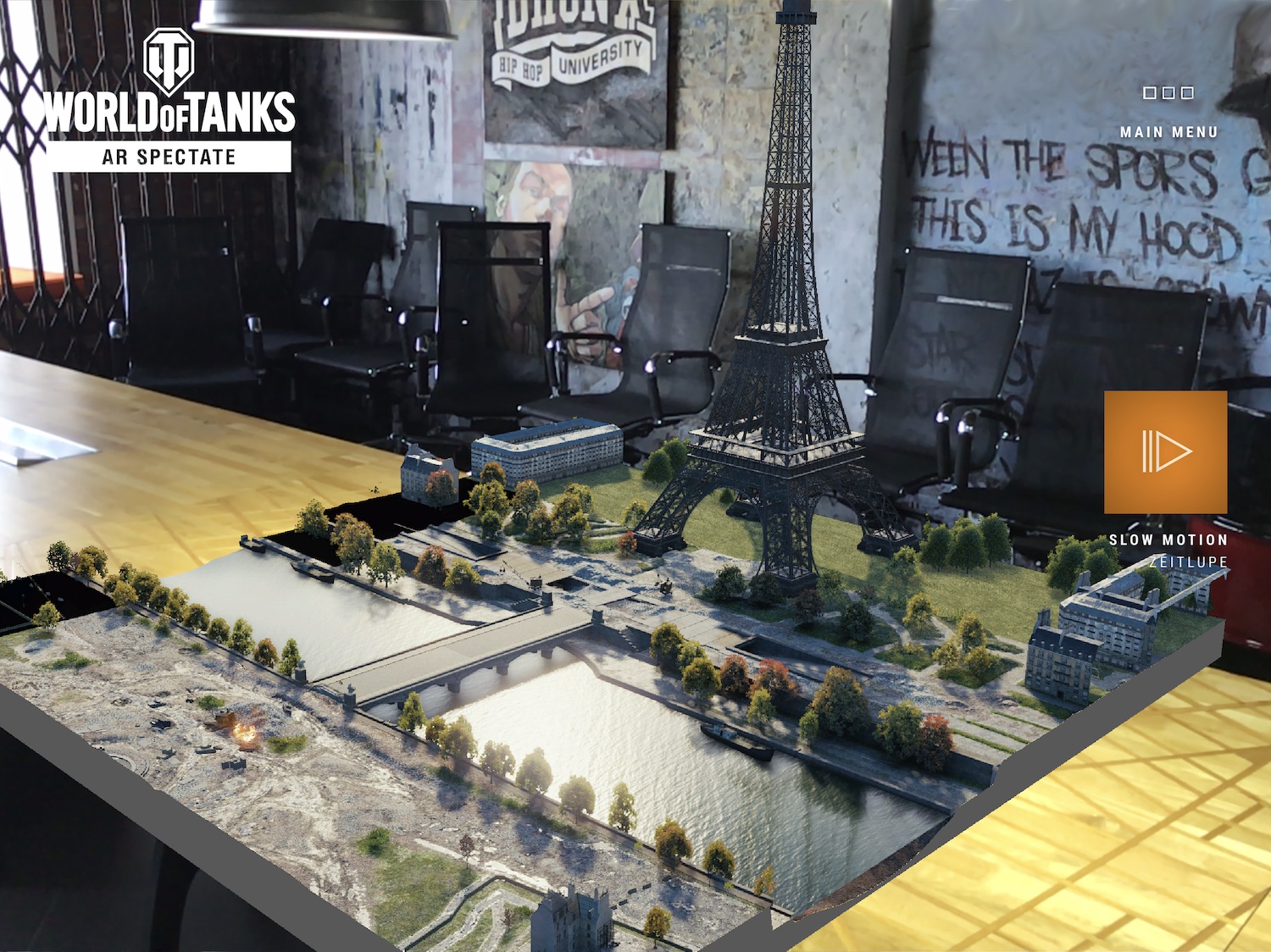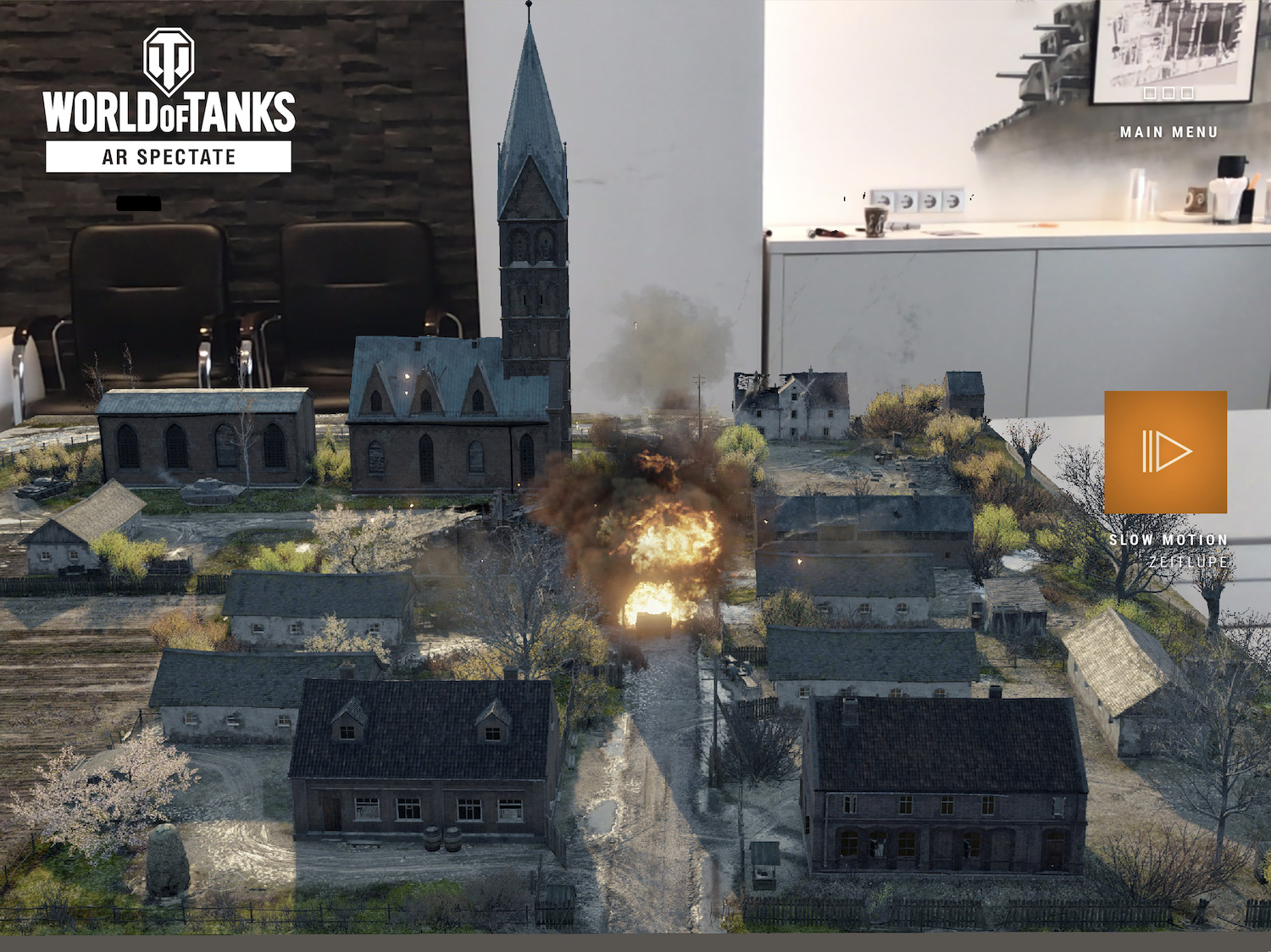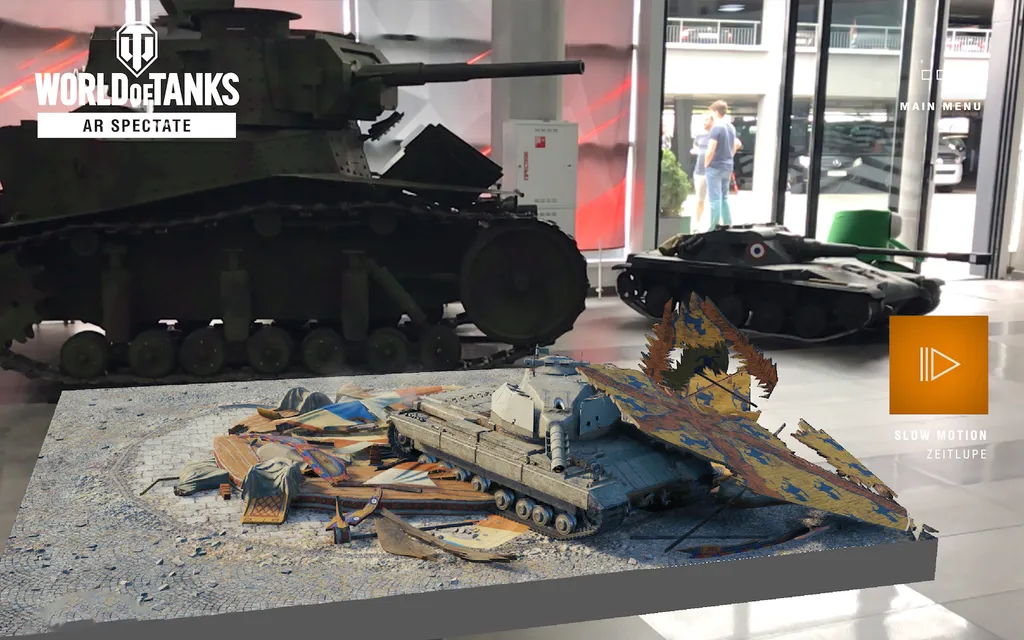Yes, tabletop gaming is very much still a thing. But just because it’s been around forever doesn’t mean it’s not keeping up with the latest tech. This is what video game giant Wargaming are hoping to prove when they start demoing their latest offering at Gamescom in Germany this week. WoT AR Spectate is a Mixed Reality take on their popular title “World of Tanks” (WoT) which boasts over 140 million players worldwide.
It’s really a proof of concept at this stage according to Wargaming Special Project Lead Matt Daly, who says there are no immediate plans for a formal launch. Yet it’s a very nice-looking proof of concept that opens up all sorts of intriguing possibilities for future use.
“Nobody we’re aware of us achieving 60fps PC GPU settings in super stable AR,” says Daly, who explains that although his team has been only been working on this project for the past six months, it wasn’t the first time they dabbled in Mixed Reality.
Their first MR project used Google Tango and Microsoft HoloLens to bring a rare digital tank from their game to a real-life exhibit at the Tank Museum at Bovington, UK. They then took the learnings from that process to try and make something that was – at least in principle – scalable and accessible to the general public.
In a nutshell, the way WoT AR Spectate currently works is that an iPad is connected to PC functions like a 3D mouse. The PC does all rendering and sends that data back to iPad as video. Using ARKit for iOS, iPad sends its constant position/orientation to the PC while an in-game camera in WoT matches that iPad’s position/orientation, and sends what it sees back to iPad as video.

Predictably, however, there were some serious technical challenges in getting that complex architecture working:
“We were attempting to do something pretty exotic, with tech not necessarily designed for this purpose. Since we’re offloading all GPU & viewer/player control processes to the PC, there was an inherent delay in that process which caused noticeable difference between reality and a sort of perceivably delayed set of AR objects & content, which was disorienting. Besides tons of local network and packet transfer optimization, we then also artificially delayed the iPads RGB camera to have the same (40-70ms) delay as the in-game feed appearing on the iPad screen. The end result is an experience is extremely stable, amazingly polished, and both sides of reality are dancing together instead of fighting each other,” says Daly.
The resulting full-blown 3D battle can unfold right onto your coffee table, but as fun as that sounds, the more exciting aspects of the technology are its applications beyond gaming. From eSports match observation to historical digital recreation (Wargaming just signed a deal with the History Channel to produce some of those) having an interactive second screen anywhere is a proposition that could potentially catch on as a consumer product.
“Content creators are going to go nuts with this stuff,” Daly predicts. “Visual believability is such a massively important part of allowing your brain to trust that something that is not actually there, is. So imagine the implications for theater, sports, socializing. The kinds of filmic (linear and interactive) tools that can or have been built for the “virtual studio” is incredible. This will be significantly different enough from Skype video today that it will make this a much more natural and quotidian part of every-day life… an augmenter, not an encumbrance.”

The current addressable market is massive, yet still lacks two crucial things according to Daly: audience familiarity (and therefore desire to engage) and then the 5G infrastructure that could allow us to no longer need to depend on limited hardware specs on mobile devices.
Indeed, mobile is likely to be a huge part of the Augmented/Mixed Reality success equation going forward, as Apple ARKit, Google ARCore and Facebook Camera Effects could deliver more than 900 million installed base by the end of this year, jumping to nearly 3.5 billion by 2022.
At the moment WoT AR Spectate only works with replays, but there is no technical reason why more interactive and live content couldn’t be developed for – and supported by – their platform. Wargaming are also interested in developing content that will work on AR headsets.
Ultimately they are betting on the fact that just like we got used to having a mobile as a second screen most of the time, perhaps we will soon demand a second (and third-fourth, etc.) volumetric layer of mediated content dynamically appearing around us. Mix that with real-time social co-presence, and you start getting some seriously powerful experiences that people might consider paying for.
What Daly and his team hope is that projects like his will show people what is already possible while hinting at even more amazing things to come, spurring the public to express more interest and ultimately encouraging content makers to bring about that future a bit faster.


























